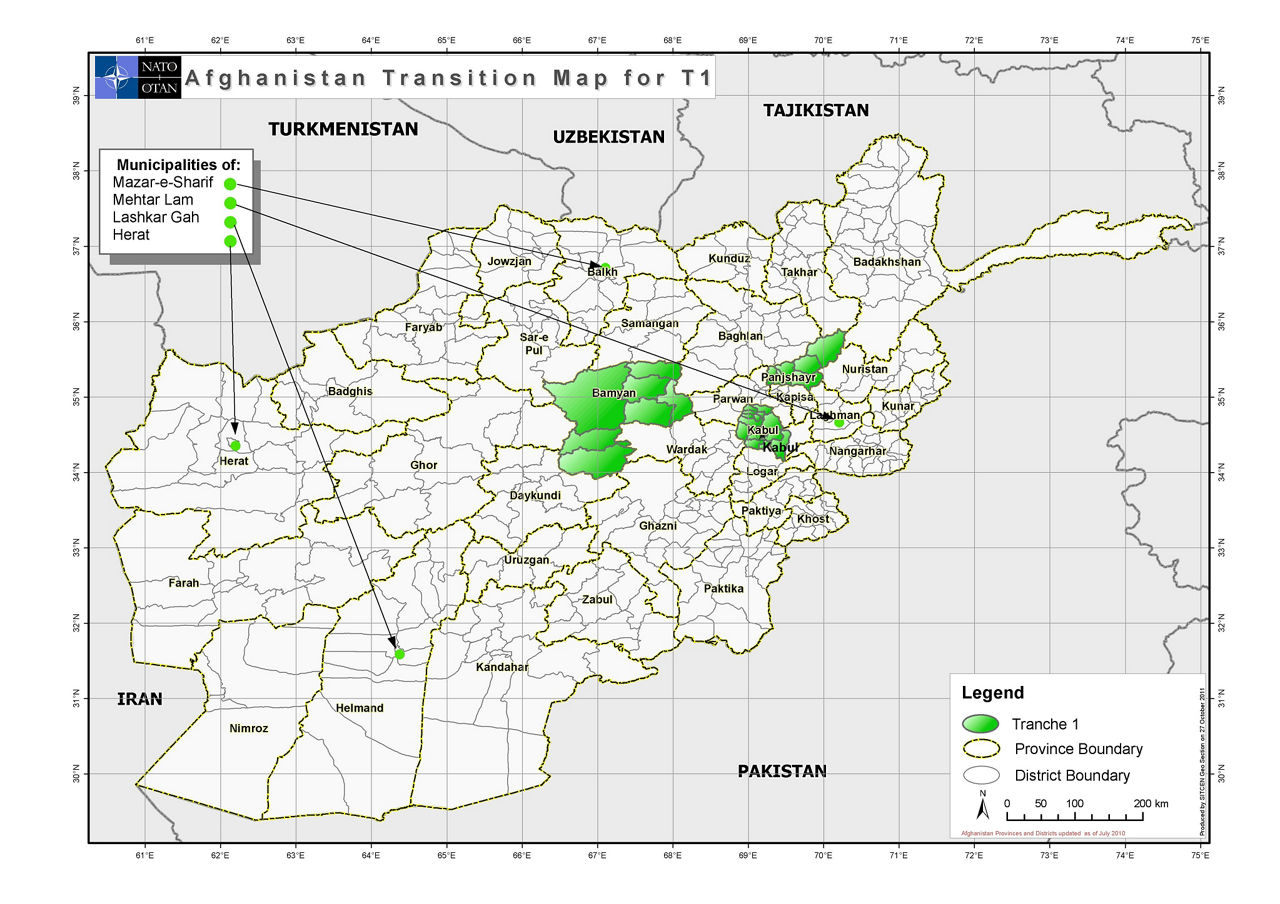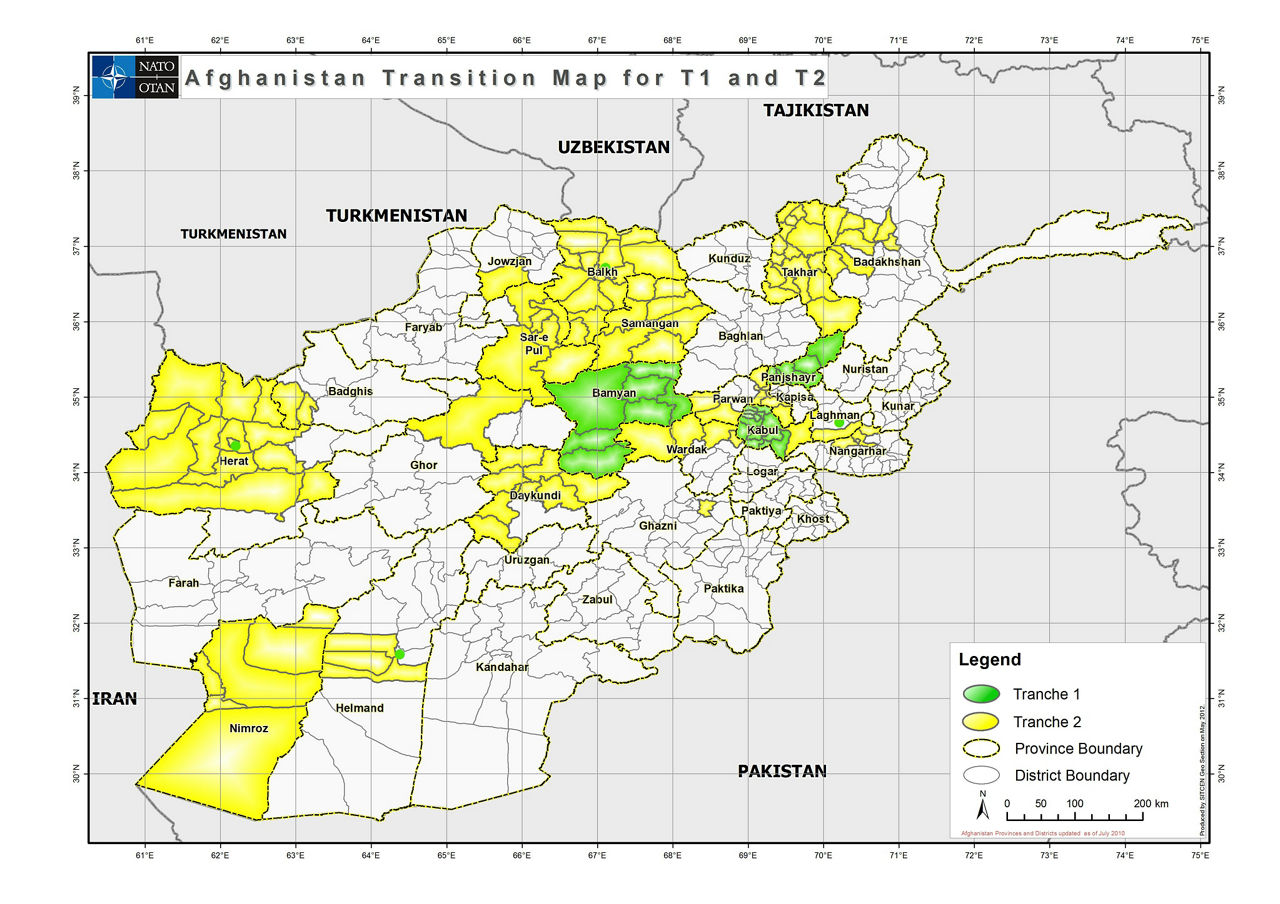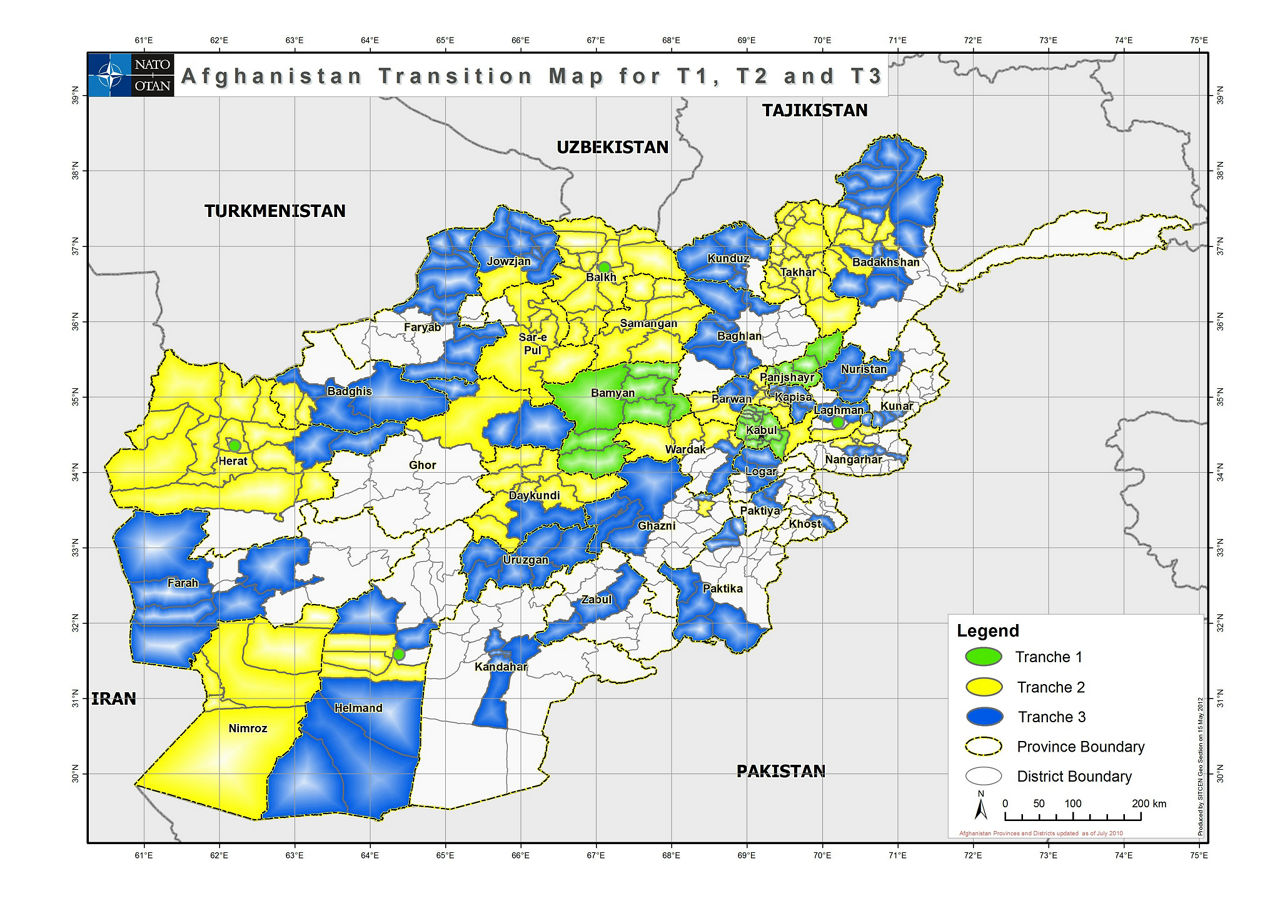Download NATO’s broadcast-quality video content free of charge

Log in
NATO MULTIMEDIA ACCOUNT
Access NATO’s broadcast-quality video content free of charge

Check your inbox and enter verification code
You have successfully created your account
From now on you can download videos from our website
Subscribe to our newsletter
If you would also like to subscribe to the newsletter and receive our latest updates, click on the button below.
Enter the email address you registered with and we will send you a code to reset your password.
Didn't receive a code? Send new Code
The password must be at least 12 characters long, no spaces, include upper/lowercase letters, numbers and symbols.
Your password has been updated
Click the button to return to the page you were on and log in with your new password.
Inteqal: Transition to Afghan lead (2011-2014)
Updated: 15 September 2022
Inteqal – the Dari and Pashtu word for transition – was the process by which the lead responsibility for security in Afghanistan was gradually transitioned from the NATO-led International Security Assistance Force (ISAF) to the Afghan National Security Forces (ANSF). Launched in 2011, the transition process was completed by the end of 2014, when ISAF completed its mission. This target was set at the 2010 NATO Summit in Lisbon and confirmed by Allied leaders at the Chicago Summit in May 2012. Following the end of ISAF’s mission, support for the further development of the ANSF continued under the smaller, non-combat NATO-led Resolute Support Mission, which ended in 2021.
Transition Tranches

Transition Tranche 1
On 22 March 2011, President Karzai announced the first set of Afghan provinces and districts to start transition. This decision was based upon operational, political and economic considerations, drawing on the assessment and recommendations of the Afghan government and NATO/ISAF through the Joint Afghan-NATO Inteqal Board (JANIB).

Transition Tranche 2
On 27 November 2011, following the decision-making process above, President Karzai announced the second set of Afghan provinces, districts and cities for transition implementation.

Transition Tranche 3
On 13 May 2012, President Karzai announced the third set of areas to enter the transition process, covering over 75 per cent of the Afghan population. This decision marked the beginning of transition in every one of the 34 provinces of Afghanistan, including every provincial capital, covering almost two-thirds of the country's districts.

Transition Tranche 4
On 31 December 2012, President Karzai announced the fourth group of Afghan provinces, cities and districts to enter the transition process. With this decision, 23 provinces out of 34 had fully entered transition and 87 per cent of the population lived in areas where ANSF was in the lead for security.

Transition Tranche 5
On 18 June 2013, President Karzai announced the launch of the fifth and final tranche of transition. Once this decision was fully implemented, the 11 remaining provinces entered into transition and Afghan forces were in the lead for security across the whole country.
Transition process explained
Transition drew on the JANIB’s recommendations, which were based on a thorough assessment of the security, governance and development situation on the ground.
The following elements were taken into consideration as part of the decision-making process:
- the capability of the Afghan National Security Forces (ANSF) to shoulder additional security tasks with less assistance from ISAF;
- the level of security allowing the population to pursue routine daily activities;
- the degree of development of local governance, so that security would not be undermined as ISAF assistance was reduced; and
- whether ISAF force level and posture were readjusted as ANSF capabilities increase and threat levels diminish.
For transition to be successful, the Afghan National Security Forces, under effective Afghan civilian control, needed to assume their security responsibility on a sustainable and irreversible basis – albeit with some level of continued support from ISAF.
The transition implementation took up to 18 months for each area, depending on conditions on the ground.
ISAF principles for transition
At the NATO Lisbon Summit in November 2010, ISAF Heads of State and Government agreed a list of principles that guided ISAF’s gradual shift from a combat to an increasingly supporting role.
These principles, which were fully incorporated in the transition implementation process, included:
- ensuring a better alignment of NATO/ISAF assistance with Afghan national priority programmes;
- working through increasingly capable Afghan institutions;
- adjusting ISAF’s troop profile and configuration with the view to meeting critical security, training and mentoring needs;
- further strengthening Afghan National Security Forces capacity; and
- supporting the evolution of the international civilian effort, including that of the ISAF Provincial Reconstruction Teams (PRTs), to enable greater Afghan capacity and leadership.
Evolution of Provincial Reconstruction Teams
In June 2011, Provincial Reconstruction Team (PRT) nations agreed a set of principles for the evolution and ultimate dissolution of their PRTs. PRTs evolved, shifting their efforts from direct delivery to providing technical assistance and building the capacity of provincial and district governments to provide essential services to the Afghan people. By the time transition was completed, all PRTs had handed over their functions to the Afghan government, traditional development actors, non-governmental organisations and the private sector, and had phased out.
|
28 August 2008 |
Lead security responsibility for Kabul city transferred to Afghan forces. |
|
19 November 2009 |
President Karzai, having won a second presidential term, expresses his ambition to see the Afghan National Security Forces take the lead security responsibility across Afghanistan by the end of 2014. |
|
20 July 2010 |
Kabul Conference; the Joint Afghan-NATO Inteqal Board (JANIB) is established as the mechanism to assess districts and provinces for transition. |
|
20 November 2010 |
NATO Lisbon Summit; the Inteqal process is agreed between the Afghan government and NATO. |
|
22 March 2011 |
Afghan New Year; President Karzai announces the first set of Afghan provinces and districts to start the transition process |
|
17 July 2011 |
First transition ceremony takes place in Bamiyan Province |
|
27 November 2011 |
President Karzai announces the second set of Afghan provinces, districts and cities to start the transition process. |
|
13 May 2012 |
President Karzai announces the third tranche of transition. |
|
31 December 2012 |
President Karzai announces the fourth set of Afghan provinces, districts and cities to start the transition process. |
|
18 June 2013 |
Official ceremony during which President Karzai announces the fifth and final tranche of transition. |
|
28 December 2014 |
A formal ceremony in Kabul marks the end of ISAF’s mission, leaving full responsibility for security across the country with the 350,000-strong Afghan forces. |
